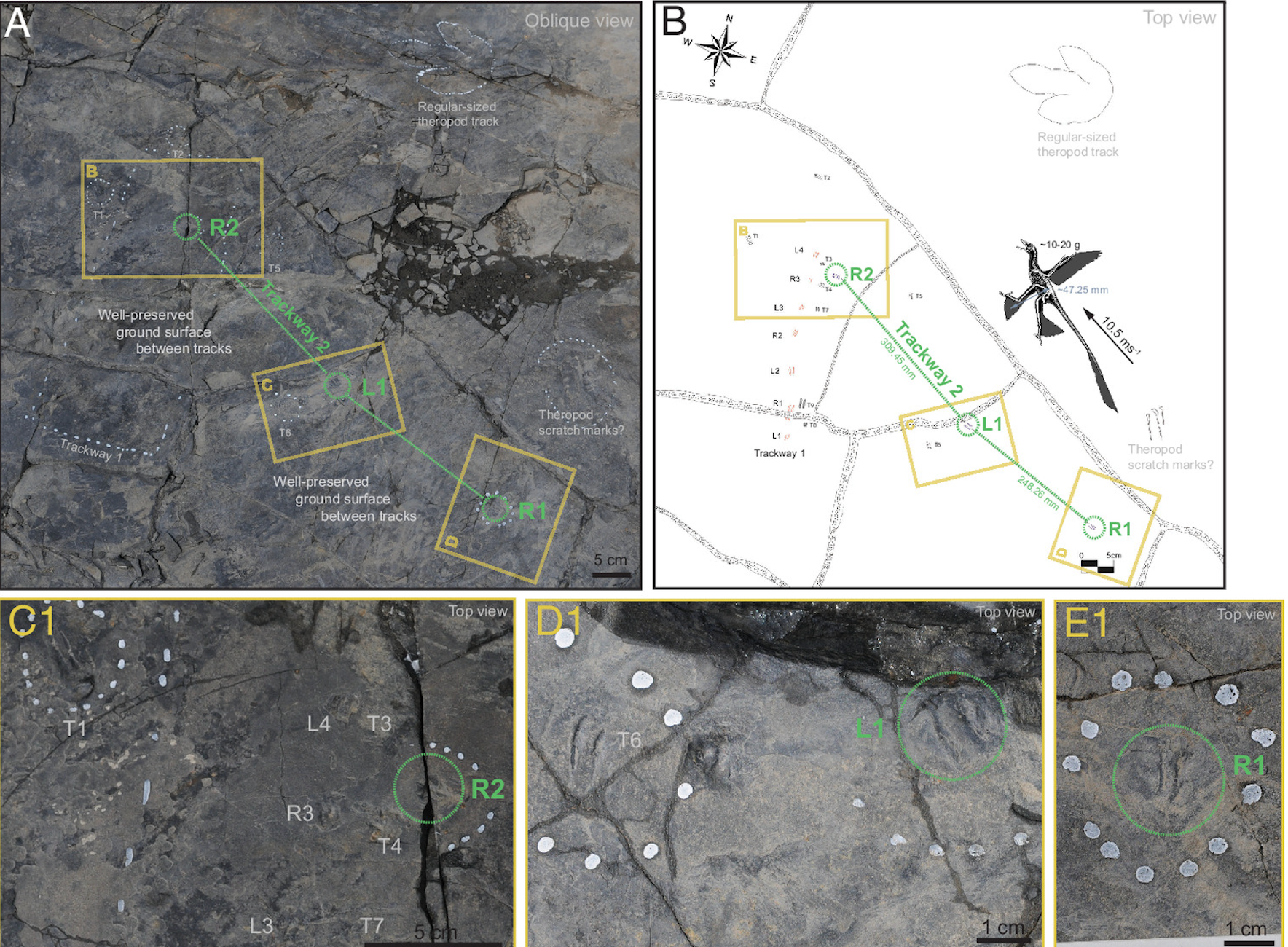Scientists uncovered strange fossil footprints of a tiny bird-sized feathered dinosaur in South Korea, a discovery that could shed new light on the origin of flight.
The dinosaur, named Dromaeosauriformipes rarus, was a “dinky” two-toed raptor about the size of a modern sparrow, scientists from the University of Maryland in the US said.
The scientists were perplexed by the fossil footprints, which indicated that the dinosaur had giant long strides. “These tracks were a puzzle because their footprints are so tiny but they’re so far apart,” palaeontologist Thomas Holtz, who was part of the team that made the discovery, said.
The discovery was detailed in the journal PNAS.
The dinosaur did not merely run on land but used a strange mechanism that likely paved the way for flight as seen in modern birds.
There is evidence that the dinosaur flapped its feathered arms to achieve lift, allowing it to travel faster than if it had relied solely on the strength of its legs.
This form of movement, called “flap running”, was somewhere between running and flying and provided the dinosaur with enough force to lift off the ground in bursts, the study noted.
While the force from the movement would have enabled the dinosaur, an ancestor of modern birds, to likely run up a tree, it fell short of full-powered flight, scientists said.
“We can now move past the debate about whether pre-avian dinosaurs used their arms to help them move before flight evolved and start to uncover missing details such as which species had these abilities and when and to what extent they were developed,” Michael Pittman, another author of the study, said.
The researchers initially suspected the fossil footprints could have been made by a dinosaur with long, stilt-like legs akin to a “a Dr Seuss character”.
They also tested the theory that the animal could have just been “extremely fast”.
After considering the dinosaur’s hip height, they estimated that the speed needed to achieve the long strides would be about 10.5 metres per second.
This is more than the speed of any living running animal, including ostrich and cheetah, making it “highly improbable” the footprints were left by any of them, the researchers said.

They concluded that the trackway was produced at lower speeds with the dinosaur elongating its stride length using the force generated by the flapping of its feathered arms.
The unique footprints, scientists said, were left “in the midst” of the dinosaur taking off or landing.
“Thus the origin of flight may not be a simply binary of ‘can or cannot’ but a spectrum,” the study said.
“It is kind of like when a plane is coming down and bounces a little bit on the runway before slowing down,” Dr Holtz explained.
The latest research could inspire a closer look at similar dinosaur trackways in Bolivia or Madagascar or Australia. “There’s no reason to suspect these trackways were only in East Asia during the early Cretaceous, so we are hoping that people will look at their footprint slabs and find something else,” Dr Holtz said.







